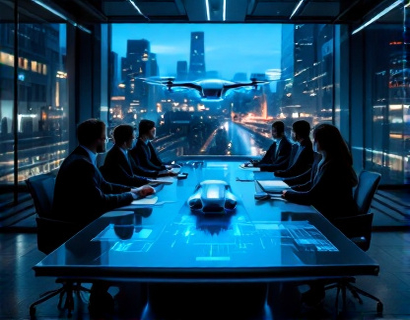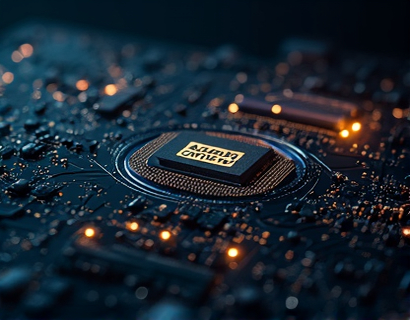Next-Gen Aerospace Innovations: Pioneering Efficiency and Safety Advancements
The aerospace industry stands at the forefront of technological innovation, driven by the relentless pursuit of efficiency, safety, and performance. Recent advancements have not only enhanced the capabilities of current aircraft and spacecraft but have also paved the way for future explorations and operations. This article delves into the latest technological breakthroughs that are reshaping the aerospace landscape, offering industry professionals and visionaries a forward-looking perspective on the future of aerospace engineering.
One of the most significant areas of innovation is in materials science. The development of advanced composites and lightweight alloys has revolutionized aircraft design. These materials offer superior strength-to-weight ratios, reducing the overall weight of the aircraft and thereby improving fuel efficiency. For instance, the use of carbon fiber reinforced polymers (CFRP) has become widespread in both commercial and military aviation. CFRP not only reduces weight but also enhances structural integrity, allowing for the design of more aerodynamic and durable aircraft. Additionally, researchers are exploring the use of nanomaterials and smart materials that can adapt to changing conditions, further enhancing the performance and safety of aerospace vehicles.
Another critical area of advancement is in propulsion technology. Traditional jet engines are being upgraded with more efficient designs and alternative fuel sources. Electric and hybrid-electric propulsion systems are gaining traction, particularly for smaller aircraft and drones. These systems offer significant reductions in noise and emissions, aligning with global sustainability goals. For example, companies are developing electric propulsion systems for regional jets, which could drastically cut down on operational costs and environmental impact. In the realm of space propulsion, ion drives and nuclear thermal engines are being researched for their potential to enable longer and more efficient space missions.
Avionics and flight control systems have also seen remarkable improvements. Advanced fly-by-wire systems and artificial intelligence (AI) are enhancing the precision and reliability of flight controls. These systems can automatically adjust to various flight conditions, reducing pilot workload and improving safety. AI-driven predictive maintenance is another game-changer, allowing for the proactive identification and resolution of potential issues before they become critical. This not only enhances safety but also reduces downtime and maintenance costs. Furthermore, the integration of real-time data analytics and machine learning algorithms is enabling more efficient flight planning and in-flight adjustments, optimizing fuel usage and flight paths.
Safety innovations are paramount in the aerospace industry, and recent advancements have significantly bolstered the safety of both commercial and space operations. Enhanced collision avoidance systems, equipped with advanced radar and sensor technologies, are being implemented to prevent mid-air collisions. These systems can detect and respond to potential threats in real-time, providing pilots with critical alerts and automated evasive actions. In the context of space missions, robust life support systems and advanced emergency protocols are being developed to ensure the well-being of astronauts during long-duration missions. The use of virtual and augmented reality in training simulations is also enhancing the preparedness of crew members for various emergency scenarios.
Environmental sustainability is a growing concern, and the aerospace industry is responding with innovative solutions. Biofuels and sustainable aviation fuels (SAFs) are being developed to reduce the carbon footprint of aviation. These fuels are derived from renewable resources and can be used in existing aircraft engines with minimal modifications. Additionally, efforts are underway to optimize flight routes and operations to minimize fuel consumption and emissions. For space missions, the development of reusable rockets is a significant step towards sustainability, reducing the environmental impact of launching payloads into orbit. Companies are also exploring in-orbit servicing and maintenance to extend the life of satellites and reduce space debris.
Connectivity and communication technologies are transforming the aerospace experience. The implementation of 5G and satellite-based communication systems is enabling seamless connectivity for passengers and crew, enhancing the in-flight experience and facilitating real-time data exchange. This connectivity is crucial for the operation of connected and autonomous aircraft, where data from various sensors and systems is continuously analyzed to ensure optimal performance and safety. For space exploration, high-bandwidth communication links are essential for transmitting large volumes of data from spacecraft to Earth, supporting scientific research and mission control.
Autonomous and unmanned systems are another frontier in aerospace innovation. Drones and unmanned aerial vehicles (UAVs) are finding applications in a wide range of sectors, from delivery services to surveillance and environmental monitoring. In aviation, autonomous taxis and regional aircraft are being developed to reduce operational costs and increase accessibility. These systems rely on advanced navigation and control algorithms, as well as robust communication networks to operate safely and efficiently. In space, autonomous spacecraft and rovers are exploring distant planets and celestial bodies, collecting valuable data and conducting experiments without human intervention.
The integration of these technologies is not without challenges. Ensuring the interoperability of new systems, addressing cybersecurity threats, and developing regulatory frameworks are critical issues that need to be addressed. Collaboration between industry stakeholders, governments, and research institutions is essential to overcome these challenges and harness the full potential of aerospace innovations. Standardization efforts are underway to establish common protocols and guidelines, facilitating the adoption of new technologies across the industry.
Looking ahead, the future of aerospace engineering is promising and full of possibilities. The continued advancement of materials, propulsion, avionics, and autonomous systems will drive further improvements in efficiency, safety, and sustainability. The industry is poised to witness the emergence of new aircraft designs, such as blended-wing aircraft and vertical takeoff and landing (VTOL) vehicles, which could revolutionize air travel. In space, the development of lunar and Mars bases, along with commercial space tourism, is on the horizon, driven by the innovations in propulsion, life support, and habitat design.
In conclusion, the aerospace industry is at a pivotal moment, with technological advancements poised to transform the way we fly and explore space. By embracing innovation and collaboration, the industry can continue to push the boundaries of what is possible, ensuring a safer, more efficient, and sustainable future for all.










































